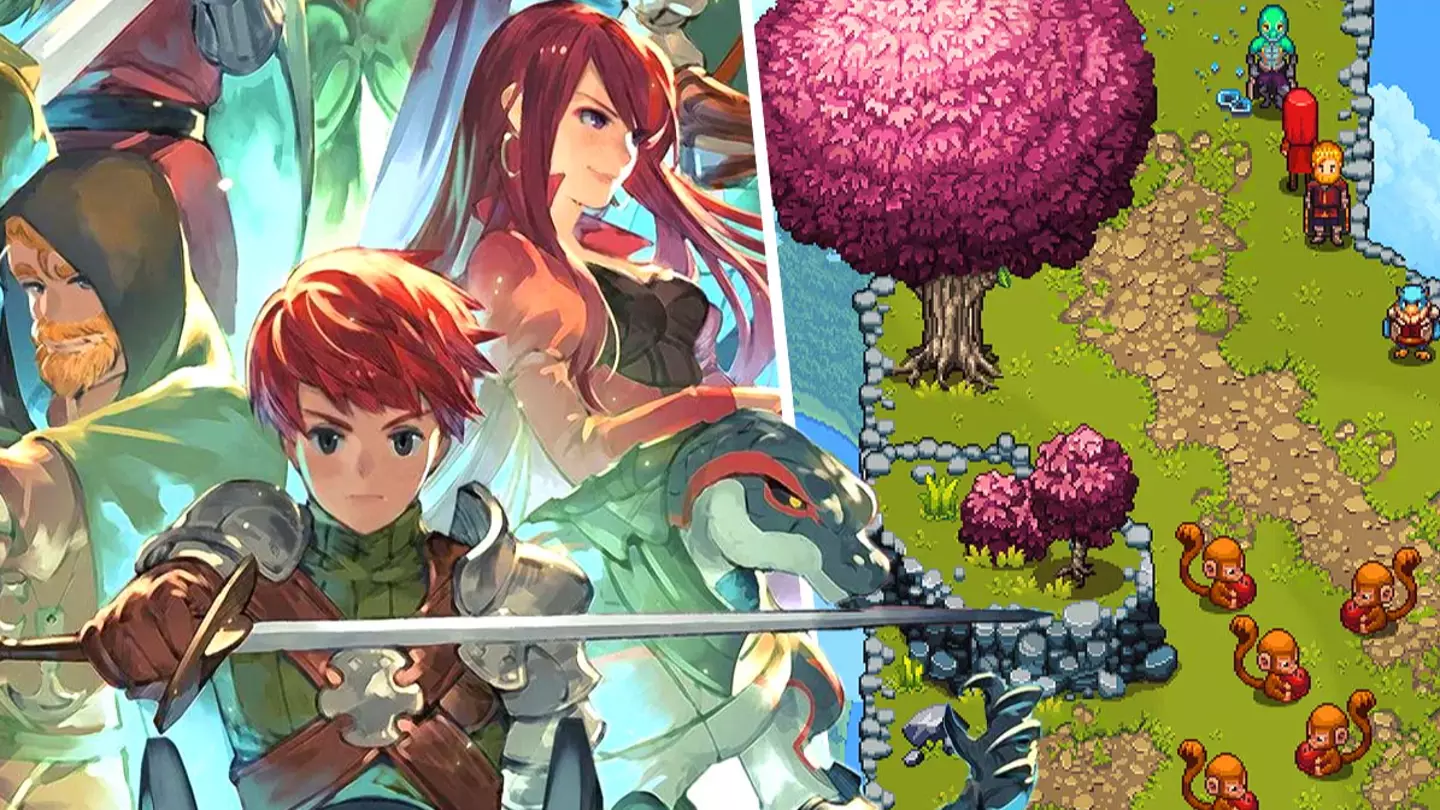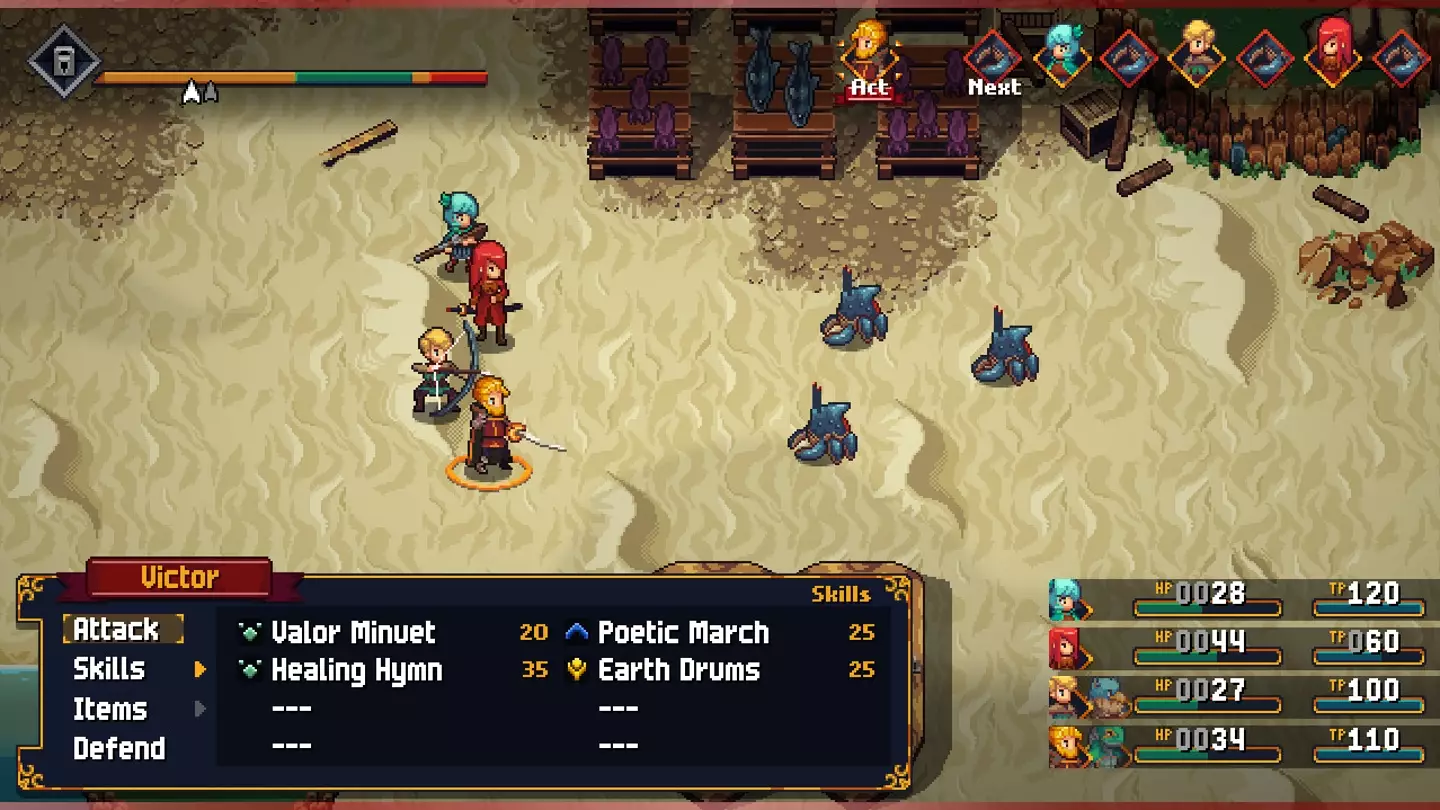
There’s something so nostalgic about a retro-style, pixel art RPG. They’re always so reminiscent of a golden age of gaming - think Chrono Trigger, Earthbound and Phantasy Star IV. These were the classics that many gamers of a certain generation grew up on, and their legacy continues to shine through in modern RPGs today.
That said, as gaming has evolved, some older game mechanics have become more streamlined and often completely obsolete - for the better. Although they might have their virtues, random encounters and grinding slow the pace of games down, serving as annoying filler more than anything else, and are often why retro RPGs can prove difficult to return to years later.
Chained Echoes is a breath of fresh air for the exact opposite reasons. This indie SNES-style JRPG was developed by a single person, and has continued to blow me away at every turn. I’ll admit, I was initially drawn to the title by its visuals, and while its beautiful pixel art is enticingly vibrant (and pops particularly well on the Switch’s OLED screen), the game is so much more than a pretty face.
Advert
Take a look at the trailer for Chained Echoes below.
In its most basic form, the story follows a group of heroes travelling the continent of Valandis. While each of the characters have their own motivations, the overarching plot is about bringing peace to the continent’s three warring kingdoms. Throughout the journey, you’ll uncover more about each of your heroes’ varied backstories, learn the lore of the world, and maybe even come to dislike Robb a bit less (I can only imagine that his insufferableness was intentional).
Without getting into spoilers, let me just say this - the writing in this game is incredible. While it nails a more serious tone when required, it also has a fantastic self-aware sense of humour in its lighter moments - I’ve been judged by a shopkeeper for attempting to interact with a mannequin, and berated by an NPC who called me out for expecting a reward for an easy fetch quest. A certain minigame in the first hour of the title is also unironically one of the funniest things I’ve experienced in a game in recent times - I won’t explain why, just, please, go and experience it for yourself.
Advert
It’s the gameplay where Chained Echoes really sets itself apart, though. For a start, it’s very important to mention that there are no random encounters at all - all enemies appear as static encounters on the map, and many can be completely avoided if you just want to focus on exploring the world (although along the main story path, there are some that you’ll be required to fight).
Battles work on a turn-based system which heavily focuses on the ‘Overdrive’ mechanic. Both landing attacks and being hit by the enemy’s gradually fills up a gauge in the corner of the screen - building it to the green Overdrive section allows your party members to deal more damage, take less from incoming attacks, and use skills at a lower TP cost. However, build the gauge too far and you’ll land in the red Overheat zone, which’ll cause you to take more damage. The bar can be brought back down by defending, switching characters, using powerful Ultra Skills, or a skill which corresponds with the icon in the top left of the screen (this changes every few turns). Maintaining this balance makes every fight engaging and fast paced - these aren’t battles that you’ll be able to simply button-mash through, even against the more common and less powerful foes.

The ability to switch characters in battle also keeps things interesting. While just four party members can be out on the field at once, each one can also be paired with an additional ally who can be switched to at any time - essentially allowing for a party of eight (Octopath Traveler’s contradictory four-member limit is quaking).
Advert
Perhaps best of all though is the game’s equivalent of a levelling system. Instead of grinding for EXP, defeating certain bosses (and completing some missions) will reward you with a Grimoire Shard - one of these can be used to unlock a new skill on every character’s extensive skill tree and grant permanent stat boosts. Not only does this keep each party member’s level equal (since all will unlock upgrades at the same time), but there’s basically never a need to grind - although you can farm SP to level up skills, your biggest upgrades generally being linked to story progression means that unnecessary roadblocks aren’t put on your path, and you’ll be equipped to take on bosses as you find them (just remember to keep your armour and weapons up to date).
Admittedly, at the time of writing, I’ve not managed to see everything that Chained Echoes has to offer, but I’m mesmerised - it positively oozes with charm, nostalgia and love, and avoids common JRPG pitfalls all while flourishing in its own unique way. With big titles like Xenoblade Chronicles 3, Persona 5 Royal, Live A Live and Crisis Core: Final Fantasy VII Reunion all dominating the JRPG genre last year, it’d be understandable if this gorgeous indie passed you by, but here’s your sign to pick it up - it deserves to be so much more than a hidden gem.
Chained Echoes is out now on PC, Mac, Xbox One, PS4, and Nintendo Switch (version tested). Code for testing was provided by the publisher.
Featured Image Credit: Deck13Topics: Indie Games, Nintendo Switch
